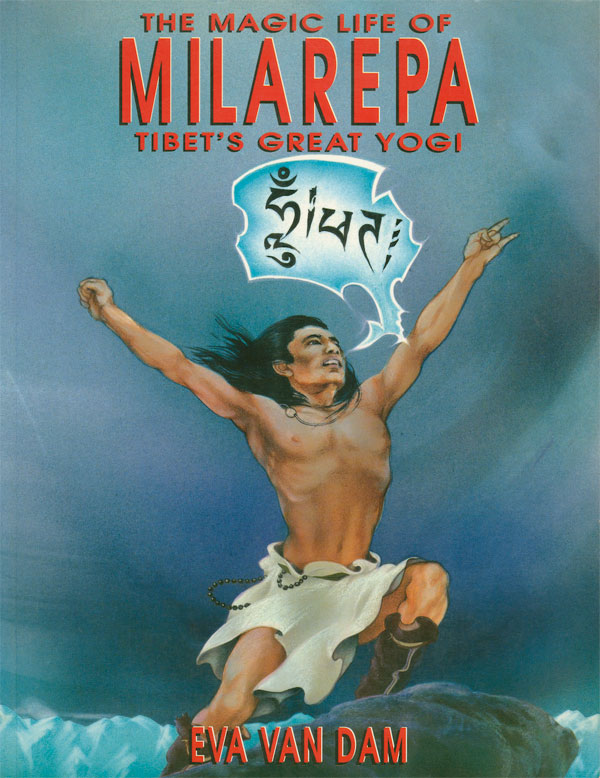 The Rubin Museum of Art in New York City recently opened an exhibition, “Hero, Villain, Yeti,” which traces the image of Tibet through one of the most popular mediums of our time: comic books. The collection, which is on view from December 9, 2011 to June 11, 2012, is curated by Martin Brauen. According to the catalog notes:
The Rubin Museum of Art in New York City recently opened an exhibition, “Hero, Villain, Yeti,” which traces the image of Tibet through one of the most popular mediums of our time: comic books. The collection, which is on view from December 9, 2011 to June 11, 2012, is curated by Martin Brauen. According to the catalog notes:Characters as diverse as Mickey Mouse, the historical Buddha, Tomb Raider Lara Croft, and the Green Lama have something in common: Tibet. For more than sixty years Tibet has figured in comic books from around the world, at times creating and at times perpetuating notions of an otherworldly land roamed by the yeti, inhabited by wise and powerful lamas, or full of dark magic.
Hero, Villain, Yeti features the most complete collection of comics related to Tibet ever assembled, with examples ranging from the 1940s to the present. More than fifty comic books from the Belgium, France, Germany, India, Italy, Japan, and the United States reflect on the depiction of Tibet, tracing the historical roots of prevailing perceptions and stereotypes and their visual and narrative evolution over time.
Brauen was the curator of the 2000 exhibition, Dreamworld Tibet, in Zurich, and a beautifully illustrated book based on it was published in English in 2004. His feelings about Blavatsky are summed up in a December 11th interview with him in Salon:
Another person who influenced our notion of Tibet very much was a half-Russian lady called Helena Blavatsky. She was the founder of the Theosophical Society, and she had quite weird ideas about Tibet (for instance, she claimed she had been in Tibet, which is quite clearly not true). She said she had telepathic relationships with two so-called Mahatmas — sages living in Tibet — and that they would tell her what to do. Interestingly, these two Mahatmas were not Tibetans, but were Indians of Aryan origin. This is a subject that comes up in many comics again: a superhero or a “lama” who is very powerful, but in most cases — actually in all cases — is not Tibetan but white.
The segment of his book dealing with the influence of Mme. Blavatsky on our imaging of Tibet is online. Dr. Brauen comes down on the side of those who believe that she never went to Tibet and that her knowledge of its religion was a distortion. His reasoning can be seen here. Yet two of the highest religious figures of Tibetan Buddhism, the Panchen and the Dalai Lama, have penned forewords to editions of her book The Voice the Silence, ethical injunctions used by the school she claimed to have belonged to.
 In the foreword to the centenary edition of Blavatsky’s Voice the Silence the Dalai Lama wrote: “I believe that this book has strongly influenced many sincere seekers and aspirants to the wisdom and compassion of the Bodhisattva Path.”
In the foreword to the centenary edition of Blavatsky’s Voice the Silence the Dalai Lama wrote: “I believe that this book has strongly influenced many sincere seekers and aspirants to the wisdom and compassion of the Bodhisattva Path.”And Lama Kazi Dawa-Samdup, a prodigious translator of Tibetan texts, including the Tibetan Book of the Dead, was of the opinion that, “despite the adverse criticisms directed against H.P. Blavatsky’s works, there is adequate internal evidence in them of their author’s intimate acquaintance with the higher lamaistic teachings, into which she claimed to have been initiated.”
So, we suppose, it is a matter of whose opinion carries more weight. Though it may be just a difference of perspective. In Europe and America Indic and Tibetan studies have been textually based; proficiency was shown by one’s ability to learn a language in one’s discipline, and translate a text.
Of course, it should be noted that Blavatsky never claimed that the esoteric school that she belonged to represented orthodox Tibetan Buddhism. “Our Mahatmas…are neither ‘Hermits’ (now), for they are done with their ‘practice’ of Yoga; nor ‘Wanderers,’ nor ‘Monks,’ since they tolerate, but would never practice, exoteric, or popular, Buddhist rites.”
No comments:
Post a Comment
All comments to this blog are subject to moderation, and may appear at our sole discretion, if found to add relevance to the site's topics.